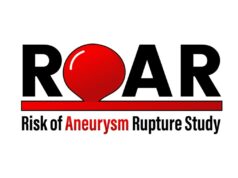
Only a small proportion of neuropathic pain patients in England who are potentially eligible for spinal cord stimulation (SCS) have received this intervention over the past decade, as per data from a retrospective cohort study published in Neuromodulation: Technology at the Neural Interface. Based on this finding, the study’s authors conclude that the recommendation for SCS to be used routinely in the management of neuropathic pain has not resulted in an uptake of this therapeutic approach since 2010.
“Our results show that only a minority of patients with neuropathic pain are considered for SCS in England,” Rui Duarte (University of Liverpool, Liverpool, UK) and colleagues write, discussing their findings. “Although there was some regional variation, the overall proportion of patients with neuropathic pain receiving an SCS was <2% of those with neuropathic pain in the period 2010–2020. Although the absolute number of new permanent SCS implants has increased over the years, given the background increase in neuropathic pain prevalence, this does not represent an improvement in uptake. The proportion of patients with neuropathic pain with a new SCS implant has remained constant at 0.9% of the total patients with neuropathic pain since 2014–2015.”
They begin their report by detailing that SCS is a recognised intervention for the management of chronic neuropathic pain—and has been recommended by the UK National Institute of Health and Care Excellence (NICE) as a management option for this indication since 2008. With their study, Duarte and colleagues aimed to assess SCS uptake across the National Health Service (NHS) in England up to 2020. Hospital episode statistics were obtained for patients with neuropathic pain potentially eligible for SCS, and patients receiving an SCS-related procedure, the authors relay, adding that data were retrieved nationally and per region between the financial years of 2010–2011 and 2019–2020.
They found that there were 50,288 adults in England attending secondary care with neuropathic pain in 2010–2011, increasing to 66,376 in 2019–2020, and the number of patients with neuropathic pain undergoing an SCS procedure increased on a year-to-year basis until 2018–2019. “Notably, there was a reduction in the number of patients who received a new permanent implant of an SCS device…for the year 2019–2020,” Duarte and colleague write.
“Despite a more than twofold increase in the number of new SCS implants being performed between 2010–2011 and 2019–2020, nationally, less than 1% of people with neuropathic pain received an SCS device, with limited evidence of an increase in this proportion over time. Interestingly, since 2014–2015, the number of SCS screening trials…has been consistently lower than the number of new implants. This may suggest an increase in the use of on-table trials instead of a two-stage procedure of SCS screening trial followed by implantation.”
The authors go on to note that there was an increase of 133% in new SCS implants from 2010–2011 to 2019–2020—but these estimates remain at less than 1.4% of the regional estimates of eligible patients with neuropathic pain. They add that some variability across English regions was observed, with SCS implant rates as low as 0.1% being seen in the Midlands, and a high of 1.9% of potentially eligible neuropathic pain patients being reached in the South-West region in 2015–2016, suggesting inequity in access to this treatment modality. An increased uptake of new implants over the full study period was observed in London and Yorkshire, as well as the North-East, North-West and South-East regions.
Discussing their findings, Duarte and colleagues state that—while not all neuropathic pain patients are eligible for SCS—overall prevalence rates of the condition are lower in their study when compared to the 7–9% previously reported. They also suggest that the reduction across SCS implant figures they observed in 2019–2020 was likely due to pressures on the UK healthcare system caused by the COVID-19 pandemic.
In addition, they state the low number of SCS implants per year and low uptake over the years “may be explained by a potential lack of awareness of current SCS guidelines and consequent low referral rates for this intervention”—as opposed to a low number of patients being suitable SCS candidates. The authors conclude that further research is required to investigate possible reasons for, and also mitigate against, inequalities in access to SCS in England.









